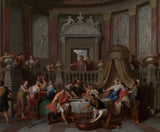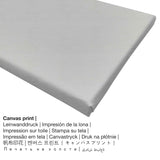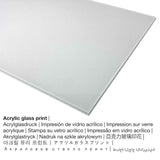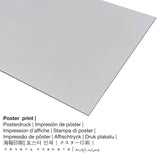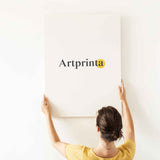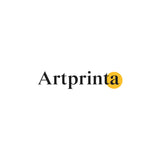Gerard Hoet, 1700 - Karamu ya Cleopatra - uchapishaji mzuri wa sanaa
Kodi ni pamoja. Usafirishaji umehesabiwa katika Checkout.
Maelezo ya kifungu
In 1700 Gerard Hoet painted this work of art. The original version had the following size: 57,8 × 69,5 cm (22 3/4 × 27 3/8 ndani) and was painted with the medium oil on canvas. Furthermore, this work of art can be viewed in in the digital art collection of Makumbusho ya J. Paul Getty. Tuna furaha kusema kwamba kazi bora ya kikoa cha umma inatolewa kwa hisani ya Makumbusho ya J. Paul Getty.Creditline ya kazi ya sanaa:. Aidha, alignment ni landscape na ina uwiano wa 1.2: 1, Ambayo ina maana kwamba urefu ni 20% zaidi ya upana.
Vifaa vya bidhaa vinavyopatikana
Kwa kila bidhaa tunatoa anuwai ya saizi na vifaa tofauti. Ili kuendana na mahitaji yako ya kibinafsi kikamilifu, unaweza kuchagua kati ya chaguo zifuatazo za ubinafsishaji wa bidhaa:
- Chapisho la bango (nyenzo za turubai): Our poster print is a UV printed flat canvas paper with a fine surface texture, which resembles the actual version of the artwork. A print poster is qualified for framing your art replica using a personal frame. Please note, that depending on the absolute size of the canvas poster print we add a white margin of approximately 2-6cm round about the painting in order to facilitate the framing with your custom frame.
- Uchapishaji wa turubai: A printed canvas, not to be mistaken with a canvas painting, is an image printed onto cotton canvas. Also, a canvas print generates a lively and positive atmosphere. The advantage of canvas prints is that they are relatively low in weight, which implies that it is quite simple to hang your Canvas print without the help of additional wall-mounts. Therefore, a canvas print is suitable for all kinds of walls.
- Chapa ya Aluminium (dibond ya alumini): These are metal prints on aluminium dibond material with a true depth. The non-reflective surface make a fashionable look. A direct Direct Print on Aluminum Dibond is your excellent introduction to art replicas produced with aluminum. For your Aluminium Dibond print, we print the chosen artpiece on the aluminium composite white-primed surface. The colors of the print are luminous and vivid, the fine details are crisp and clear.
- Uchapishaji wa glasi ya Acrylic (na mipako halisi ya glasi): An acrylic glass print, which is sometimes denoted as a UV print on plexiglass, will transform your favorite original work of art into lovely home décor and offers a good alternative option to dibond or canvas fine art replicas. The major advantage of a plexiglass fine art print is that contrasts and painting details become more recognizeable because of the subtle gradation of the picture.
Kanusho la kisheria: We do everythig possible in order to describe the art products in as much detail as it is possible and to display them visually in our shop. However, the colors of the print products and the printing may diverge to a certain extent from the presentation on your screen. Depending on the settings of your screen and the nature of the surface, not all color pigments are printed one hundret percent realistically. Because the art prints are processed and printed by hand, there may also be slight deviations in the motif's size and exact position.
Maelezo ya makala yaliyoundwa
| Chapisha aina ya bidhaa: | nakala ya sanaa |
| Njia ya uzazi: | uzazi wa kidijitali |
| Mbinu ya uzalishaji: | uchapishaji wa dijiti |
| Uzalishaji: | Uzalishaji wa Ujerumani |
| Aina ya hisa: | uzalishaji kwa mahitaji |
| Matumizi ya bidhaa: | sanaa ya ukuta, muundo wa nyumba |
| Mwelekeo wa picha: | muundo wa mazingira |
| Kipengele uwiano: | 1.2: 1 |
| Maana ya uwiano wa picha: | urefu ni 20% zaidi ya upana |
| Nyenzo za uzazi zinazopatikana: | chapa ya chuma (dibond ya alumini), chapa ya bango (karatasi ya turubai), chapa ya turubai, chapa ya glasi ya akriliki (iliyo na mipako halisi ya glasi) |
| Vibadala vya kuchapisha turubai (turubai kwenye fremu ya machela): | 60x50cm - 24x20", 120x100cm - 47x39", 180x150cm - 71x59" |
| Chaguzi za kuchapisha glasi ya Acrylic (na mipako halisi ya glasi): | 60x50cm - 24x20", 120x100cm - 47x39" |
| Vibadala vya ukubwa wa bango (karatasi ya turubai): | 60x50cm - 24x20", 120x100cm - 47x39" |
| Lahaja za ukubwa wa uchapishaji wa alumini: | 60x50cm - 24x20", 120x100cm - 47x39" |
| Muundo wa uchapishaji wa sanaa: | uzazi usio na mfumo |
Data ya usuli kuhusu mchoro wa kipekee
| Kichwa cha mchoro: | "Karamu ya Cleopatra" |
| Uainishaji: | uchoraji |
| Aina pana: | sanaa ya classic |
| Wakati: | 18th karne |
| kuundwa: | 1700 |
| Umri wa kazi ya sanaa: | zaidi ya miaka 320 |
| Mchoro wa kati asilia: | mafuta kwenye turubai |
| Vipimo vya mchoro wa asili: | 57,8 × 69,5 cm (22 3/4 × 27 3/8 ndani) |
| Imeonyeshwa katika: | Makumbusho ya J. Paul Getty |
| Mahali pa makumbusho: | Los Angeles, California, Marekani |
| Tovuti ya makumbusho: | Makumbusho ya J. Paul Getty |
| Aina ya leseni ya mchoro: | Uwanja wa umma |
| Kwa hisani ya: | Makumbusho ya J. Paul Getty |
Data ya msanii wa muktadha
| Jina la msanii: | Gerard Hoet |
| Jinsia: | kiume |
| Kazi za msanii: | mchoraji |
| Uainishaji wa msanii: | bwana mzee |
© Ulinzi wa hakimiliki - www.artprinta.com (Artprinta)
Maelezo ya kazi ya sanaa kutoka kwa jumba la makumbusho (© - na The J. Paul Getty Museum - www.getty.edu)
Seated under a canopy at the lavish banquet that she is hosting for Marc Antony, Cleopatra holds a glass of wine into which she is about to place a priceless pearl earring as an ostentatious sign of her indifference to wealth. The pearl dissolves in the wine, which she then drinks to Antony's health. In return, he presents her with Cyprus, Phoenicia, Coele-Syria, and parts of Arabia. Since the late sixteenth century, newly available translations of the Life of Marc Antony had led to the rediscovery across Europe of the legend of the beautiful, brilliant, and powerful Cleopatra. Her story soon became a popular subject for plays and paintings.
Gerard Hoet set his historical subject from the first century B.C. in a lavish late Baroque interior. Three versions of the Banquet of Cleopatra by the artist survive, all of which show his imaginative architectural settings and careful rendering of rich clothes and accessories. Hoet's works typify the classicizing style of Dutch academic art around 1700.

